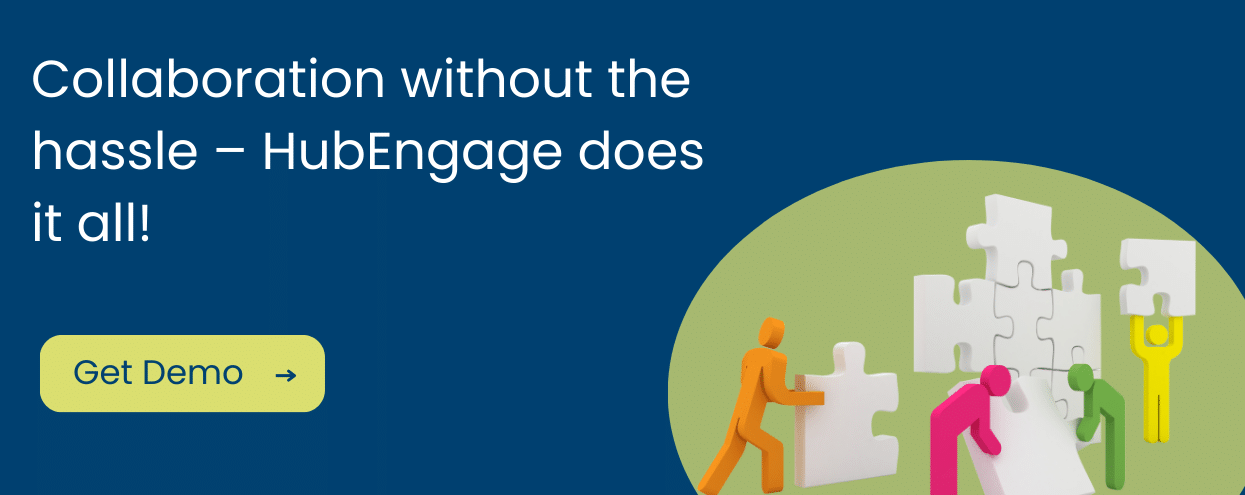In a world where teamwork drives progress, collaboration in the workplace is essential. Effective collaboration fosters innovation, improves productivity, and strengthens a sense of community among employees. It’s not just about working together—it’s about combining unique talents to reach common goals.
In an age where remote work and fast communication reign supreme, collaboration becomes the lifeblood of productivity. Picture a world where teamwork isn’t just an optional group activity but a mandatory ticket to success. Spoiler alert: it looks a lot like everyone being on the same Slack thread together, but with fewer memes. So, grab your coffee and let’s explore why collaborating effectively is essential for workplace harmony and kicks inefficiency to the curb!
What is Workplace Collaboration?
Collaboration in the workplace is the process where individuals and teams come together to share ideas, solve problems, and achieve common goals. Effective collaboration isn’t just about working together; it’s about leveraging diverse perspectives and skills to create innovative solutions and optimize productivity. In today’s work environment—whether remote, hybrid, or in-office—collaboration has become a cornerstone of successful organizations.
Collaboration can take many forms, from informal brainstorming sessions over coffee to structured team meetings with clear agendas. The rise of digital tools has further transformed how we collaborate, allowing teams to connect and share ideas in real-time, regardless of their physical location. Platforms like Slack, Microsoft Teams, and Asana have become the virtual meeting rooms where ideas flourish and projects come to life. This not only enhances productivity but also fosters a sense of community among team members, making them feel more engaged and valued in their roles.
Why Collaboration Matters in the Workplace
Workplace collaboration fosters a dynamic where ideas flow freely, enabling faster problem-solving, stronger decision-making, and higher employee engagement. Studies show that companies prioritizing collaboration enjoy increased employee satisfaction and productivity, and often experience lower turnover rates. Research from McKinsey also highlights that collaborative practices can drive significant performance gains, particularly when organizations optimize team networks and cross-functional projects.
Difference Between Collaboration and Teamwork
Collaboration and teamwork both involve working together, but they differ in their approach. Collaboration is the process of individuals or groups coming together to share ideas, resources, and expertise to achieve a common goal, often in an informal or flexible manner. It emphasizes open communication and joint problem-solving.
Teamwork, on the other hand, refers to a more structured approach where a group of people work together towards a specific objective, often with defined roles and responsibilities. It focuses on coordinated efforts and mutual support within the team to achieve the goal efficiently.
In short, while teamwork is a type of collaboration, it is more structured and role-oriented, whereas collaboration can be more fluid and inclusive.
Key Benefits of Effective Collaboration
Here’s how collaboration translates into real-world benefits for companies and employees alike:
1. Enhanced Problem-Solving and Innovation
- When team members bring varied experiences and ideas, they approach problems from multiple angles. This diversity of thought enables innovative solutions and often leads to breakthroughs that wouldn’t happen in isolation.
- Example: Tech companies often hold “hackathons” or brainstorming sessions, where diverse teams come together to create, iterate, and test new ideas quickly.
2. Increased Employee Satisfaction and Engagement
- Collaborative environments tend to improve morale by giving employees a voice and role in larger projects. This sense of belonging and contribution can greatly enhance job satisfaction.
3. Higher Productivity and Efficiency
- Collaborative teams often complete projects faster, as responsibilities are shared, and team members support each other in achieving goals. McKinsey’s analysis of collaborative networks demonstrates that companies can improve efficiency by facilitating strategic collaborations within and across departments.
4. Better Skill Development and Knowledge Sharing
- When team members work together, they learn from each other, gaining new skills and insights. This promotes continuous learning and a culture where knowledge flows freely.
- Collaborative projects provide employees with hands-on experience, enhancing both technical and interpersonal skills.
5. Stronger Company Culture and Employee Loyalty
- Collaboration helps break down silos within organizations, creating a sense of unity and shared purpose. Employees are more likely to feel valued and stay longer in workplaces that promote teamwork and inclusion.
Effective Collaboration Strategies
Achieving effective collaboration takes planning and commitment. Here are actionable strategies to encourage collaboration within teams:
1. Establish Clear Communication Channels
- Open communication is essential for successful collaboration. Ensure that teams have access to both real-time (e.g., chat tools like HubEngage, Slack) and asynchronous communication platforms (like project management tools) to keep everyone informed and engaged.
2. Set Clear Goals and Expectations
- Every collaborative project should start with well-defined goals and roles for each team member. When people know their specific responsibilities and the project’s end goals, they can align their efforts more effectively.
3. Promote Cross-Functional Teams
- Bringing together individuals from various departments can lead to new insights and prevent groupthink. Encourage team members from different backgrounds and roles to participate in projects to maximize creativity and problem-solving.
4. Foster a Culture of Psychological Safety
- Employees need to feel comfortable sharing ideas and opinions without fear of judgment. Leaders can foster a psychologically safe environment by encouraging open feedback and showing respect for diverse opinions.
5. Invest in Collaboration Tools
- Technology can significantly enhance teamwork. Tools like Trello, Microsoft Teams, and Asana facilitate project management, while cloud storage services enable team members to share files and information seamlessly.
6. Encourage Team-Building Activities
- Social interactions can strengthen team bonds and improve collaboration. Consider organizing regular team-building exercises, workshops, or retreats to encourage employees to connect on a personal level.
Real-World Examples of Collaboration Success
Several organizations have seen dramatic improvements by embracing collaboration:
- Salesforce has an open-door policy and a collaborative culture that allows teams to share customer insights and challenges. This approach has enabled them to drive customer satisfaction and improve product offerings.
- Google’s Project Aristotle focused on understanding what makes teams successful. They found that psychological safety and collaborative communication were the main drivers behind high-performing teams.
- At HubEngage, collaboration is integral to delivering tailored employee engagement solutions. Teams from diverse backgrounds – including product development, marketing, and customer success, work closely to create innovative software that meets clients’ evolving needs. Using a collaborative approach, HubEngage is able to quickly adapt to market trends and feedback, ensuring that its platform continuously aligns with the best practices in employee engagement and workplace productivity. The team regularly collaborates on new features and updates, keeping customer feedback at the center, which not only enhances the product but also strengthens client relationships.
Overcoming Common Collaboration Challenges
While collaboration is beneficial, it can come with challenges. Here are common obstacles and ways to overcome them:
1. Lack of Clear Direction
- Solution: Leaders should set clear project objectives, deadlines, and roles to prevent confusion and ensure everyone is on the same page.
2. Personality Clashes
- Solution: Foster an inclusive environment where diverse personalities are respected. Encourage empathy and understanding within teams to bridge interpersonal gaps.
3. Communication Barriers
- Solution: Use clear and concise language, and provide training on effective communication. Digital collaboration tools can help bridge gaps, especially for remote teams.
4. Resource and Time Constraints
- Solution: Prioritize projects that benefit most from collaboration, allocate time for team meetings, and provide resources that streamline workflows.
How to Measure Collaboration Success
To ensure collaboration efforts are yielding results, consider measuring:
- Project Outcomes: Track project completion rates, quality, and efficiency to see if collaborative efforts are leading to better results.
- Employee Feedback: Use surveys and feedback forms to understand how employees feel about teamwork and if they find it beneficial.
- Engagement and Retention Metrics: Monitor employee engagement levels and turnover rates to assess how collaboration affects satisfaction.
How HubEngage Supports Collaboration in the Workplace
Ah, HubEngage, our shining knight in digital armor! This platform bridges the communication gaps and fosters collaboration among employees like a well-stirred pot of gumbo. With its comprehensive suite of digital tools such as Mobile Apps, Web, Email, SMS, and Digital Signage, everyone can be in the loop regardless of where they choose to work from.
Imagine effortlessly broadcasting team updates, engaging employees instantly via messages, and even celebrating milestones through a highly visual platform. Sounds dreamy, right? HubEngage ensures that you reach every single employee, even those mysterious ones hiding in the land of “I’m currently in a meeting.”
Moreover, HubEngage’s community-building features foster connections among employees, leading to a more united workplace. So ditch the post-its and create a tapestry of collaboration with HubEngage, the very best choice for organizations ready to embrace teamwork!
A Collaborative Future
Effective collaboration is more than just teamwork; it’s about creating an environment where people feel empowered to share, create, and succeed together. By investing in strategies and tools that facilitate open communication and teamwork, companies can boost productivity, enhance employee satisfaction, and build a culture of continuous improvement.
In an increasingly connected and competitive world, collaboration in the workplace is a powerful way to drive innovation, retain top talent, and achieve organizational goals.
Ready to Supercharge Your Team’s Collaboration?
Transform the way your team collaborates with HubEngage’s award-winning platform. Experience the power of streamlined communication, personalized engagement, and seamless integration that aligns perfectly with your brand identity. Say goodbye to juggling multiple platforms and hello to up to 5X time savings. With features like custom branded apps, dynamic personalization, extensive automation, multi-language support, and unique gamification, HubEngage is the ultimate tool for fostering a collaborative and productive workplace. Don’t miss out on the opportunity to elevate your team’s performance. See a demo today and witness the difference HubEngage can make!














